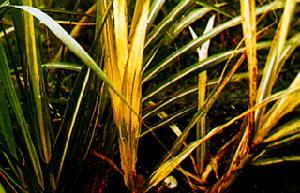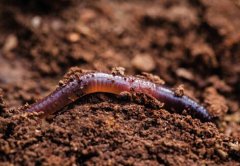Effect of sugarcane white stripe disease: introduction to sugarcane white stripe disease and its control methods
Do you like sugar cane? If you want to know about the diseases and insect pests of sugarcane, here is an introduction to white stripe, one of the diseases of sugarcane. This paper mainly introduces the symptoms, ecology and control methods of white stripe disease. Let's take a look.

Symptoms: there are chronic and acute types of the disease.
(1) chronic type: the symptoms change greatly. It is a typical symptom that the leaves produce white stripes of 1 mm and 2 mm, such as pencil lines. Sometimes the leaves turn white. Discolored tissue occasionally has gangrenous erythema. The diseased plant is easy to produce lateral buds, and the leaves of lateral buds also show the same symptoms.
(2) Acute type: the whole plant or part of the tiller suddenly showed leaf curling and withering, just like cutting off the root system inadvertently. When these damaged stems tillered again, they all showed the same symptoms of chronic type.
Disease ecology: in addition to the transmission of sugarcane seedlings, the field can be infected with diseased cane juice through a cane knife when cutting sugarcane. The diseased and healthy plants were adjacent to each other, and the phenomenon of disease transmission also occurred. The disease in the field began to occur in large quantities from November to December.
Prevention and control methods:
First, plant disease-resistant varieties F160, ROC12 and so on.
Second, serious farms should collect seedlings from disease-free areas and carry out sugarcane seedling renewal.
Third, the infected sugarcane orchard should not have persistent roots, and the diseased plants should be removed and burned.
4. The cutting tool of seedling harvester or harvester should be sterilized with 10%Iodophor when changing different area numbers of sugarcane orchards.
Pay attention to the diseased plants in the nursery period. If diseased plants are found, they should be removed immediately. The incidence rate is more than 5%, and seedlings shall not be collected.
Now you know how to control the white streak of sugarcane, mainly from five aspects.
- Prev
Fishing vessel Management in Taiwan: the introduction of the New Fisheries Policy in 2019 and the Scientific Progress of Fisheries Modernization
The development of the fishing industry is also getting better and better, and the treatment of fishermen is also getting better and better in terms of policies. which of the latest policies is new? Let's take a look. In December last year, the Fisheries Department announced an amendment to "overseas employment is not China."
- Next

What are the benefits of animals living in soil to the soil? Soil animal remains fattening
Do you know what the benefits of soil animals are and what they can do with them? Do you want to know about it? Let's take a look. What if it helps you plant in the future. Soil animals feed bacteria and fungi, ingest and decompose residues, and increase soil respiration.
Related
- A one-day flower show brings 130 million yuan in orders! Nanhai, this Phalaenopsis exhibition is amazing
- What do the flower language and meaning of Lutheran tree mean? Precautions for planting Lutheran tree
- Encounter Chaoshan Kongfu tea, not without this cup of Phoenix single clump
- The durian market in Vietnam and Thailand is flooded. The price of imported durian has plummeted by 30-40% in a month.
- Shanghai solved the problem of local vegetable supply by planting 80,000 mu of green leafy vegetables.
- Wageningen University has become the best agricultural university in the world for the seventh time in a row.
- The strongest export season of South African grapes is full of challenges, with exports to Russia falling sharply by 21%.
- Sri Lanka is on the verge of bankruptcy, "Tea for debt" Organic Agriculture Revolution aggravates the Food crisis?
- Turning waste into earthworm manure and worm manure into organic fertilizer-A new choice for auxiliary farming
- Organic rice growers shoulder the responsibility of nurturing agricultural talents! Yinchuan Sustainable Farm with Organic Life Camp

